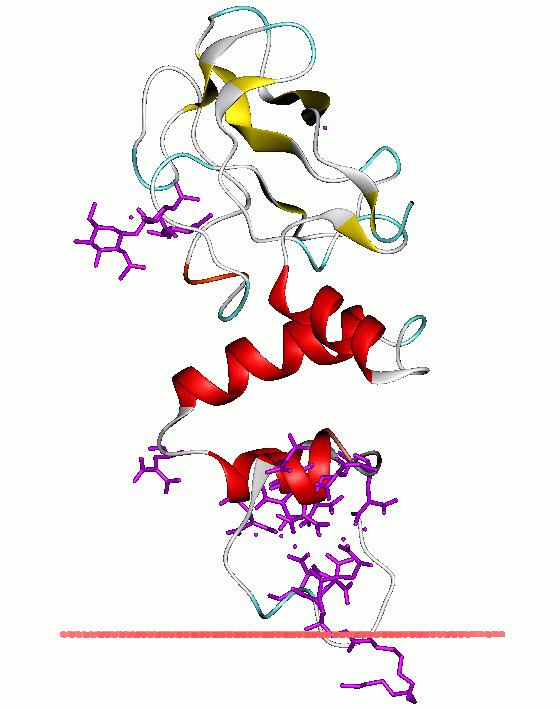InterPro IPR000001 PROSITE PDOC00020 | Pfam PF00051 SMART KR SCOP 1pk4 | |
 | ||
Kringle Domains are autonomous protein domains that fold into large loops stabilized by 3 disulfide linkages. These are important in protein–protein interactions with blood coagulation factors. The name Kringle comes from the Scandinavian pastry that these structures resemble.
Kringle domains have been found in plasminogen, hepatocyte growth factors, prothrombin, and apolipoprotein(a).
Kringles are found throughout the blood clotting and fibrinolytic proteins. Kringle domains are believed to play a role in binding mediators (e.g., membranes, other proteins or phospholipids), and in the regulation of proteolytic activity. Kringle domains are characterised by a triple loop, 3-disulfide bridge structure, whose conformation is defined by a number of hydrogen bonds and small pieces of anti-parallel beta-sheet. They are found in a varying number of copies in some plasma proteins including prothrombin and urokinase-type plasminogen activator, which are serine proteases belonging to MEROPS peptidase family S1A.
Human proteins containing this domain
ATF; F12; F2; HABP2; HGF; HGFAC; KREMEN1; KREMEN2; LPA; LPAL2; MST1; PIK3IP1; PLAT; PLAU; PLG; PRSS12; ROR1; ROR2;
